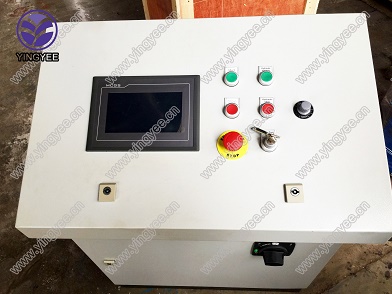
Understanding the Steel Frame CZ Purlin Roll Forming Machine
In modern construction and manufacturing industries, the efficiency and effectiveness of producing structural components are paramount. One of the significant advancements in this area is the steel frame CZ purlin roll forming machine. This machine has gained popularity due to its ability to produce high-quality, durable steel purlins that are essential for various structural applications.
What is a CZ Purlin?
Purlins are horizontal structural elements used in roofs and walls to support loads from the roof deck or sheathing. They are crucial in providing structural stability and are commonly made of steel due to its strength and durability. CZ purlins are so named because of their unique shape—‘C’ and ‘Z’ sections—which offer versatility in usage. The ‘C’ and ‘Z’ shapes allow for optimized load distribution and are easily interconnected, making them ideal for different construction needs.
The Role of Roll Forming Machines
Roll forming is a continuous bending process in which a long strip of metal, such as steel, is gradually shaped into a desired cross-section through a series of rollers. This method is highly efficient and suitable for mass production, producing consistent profiles with excellent precision.
The steel frame CZ purlin roll forming machine is specifically designed to fabricate CZ purlins from coils of steel. By feeding steel coils through the machine, the process continually forms and cuts the steel into required lengths, creating ready-to-install purlins.
Key Features of CZ Purlin Roll Forming Machines
1. Customizable Designs One of the significant advantages of CZ purlin roll forming machines is the ability to customize dimensions and specifications according to project needs. Users can adjust the machine settings to produce various sizes and shapes of purlins.
2. High Speed and Efficiency These machines are designed for high-speed production, allowing manufacturers to keep up with large-scale construction projects. The continuous operation of roll forming significantly reduces the time required to produce purlins compared to traditional methods.

3. Material Conservation Roll forming minimizes waste as it utilizes the entire width of the metal coil, which is particularly advantageous in cost-sensitive projects. The efficiency of material usage makes it an economically viable option for manufacturers.
4. Durability and Strength Roll-formed purlins are robust and can withstand heavy loads due to their uniform material distribution and shape. This durability makes them suitable for various construction applications, including industrial buildings, warehouses, and commercial structures.
5. Automation and Control Modern machines are equipped with advanced automation features, enhancing operational efficiency. Computer Numerical Control (CNC) systems allow for precise adjustments and quick changeovers between different purlin designs.
Applications of CZ Purlins
CZ purlins are widely used in numerous construction projects due to their adaptability and strength. Some common applications include
- Roof Structures Purlins provide essential support for roofing sheets, aligning with beams and trusses to enhance the overall stability of the structure.
- Wall Support In wall systems, purlins act as a framework for attaching other components like siding or sheathing, ensuring structural integrity.
- Industrial and Commercial Buildings Due to their high-load capacity and ease of installation, CZ purlins are favored in the construction of factories, warehouses, and large commercial buildings.
Conclusion
The steel frame CZ purlin roll forming machine represents a significant breakthrough in the construction and manufacturing sectors. Its ability to produce high-quality, customizable, and efficient steel purlins makes it an invaluable asset for modern building projects. As industries continue to seek innovative solutions for structural components, the roll forming technology stands out for its precision and effectiveness, paving the way for stronger and more reliable constructions in the future. The ongoing advancements in this technology will likely contribute to further improvements in production efficiency, material use, and overall construction quality.